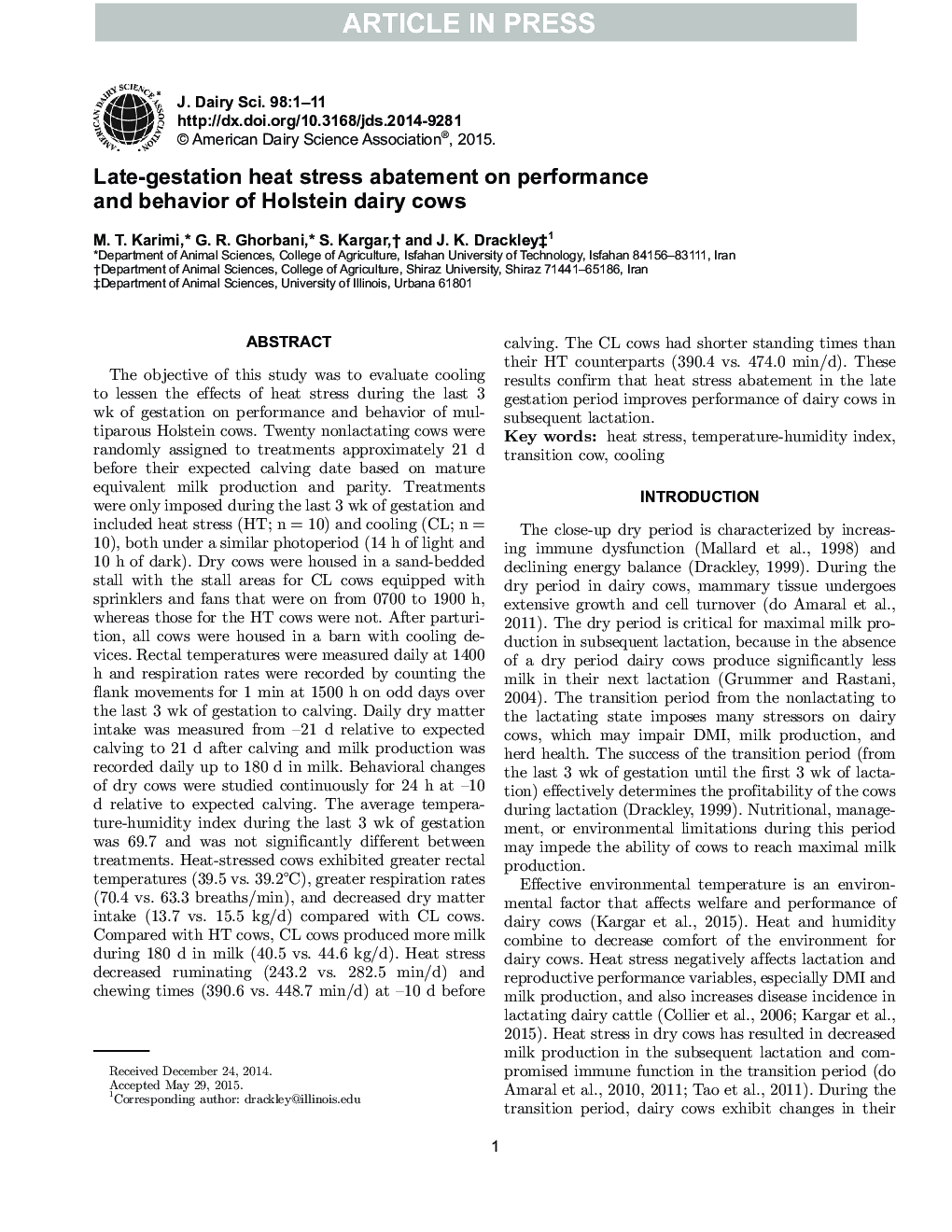| Article ID | Journal | Published Year | Pages | File Type |
|---|---|---|---|---|
| 10974880 | Journal of Dairy Science | 2015 | 11 Pages |
Abstract
The objective of this study was to evaluate cooling to lessen the effects of heat stress during the last 3 wk of gestation on performance and behavior of multiparous Holstein cows. Twenty nonlactating cows were randomly assigned to treatments approximately 21 d before their expected calving date based on mature equivalent milk production and parity. Treatments were only imposed during the last 3 wk of gestation and included heat stress (HT; n = 10) and cooling (CL; n = 10), both under a similar photoperiod (14 h of light and 10 h of dark). Dry cows were housed in a sand-bedded stall with the stall areas for CL cows equipped with sprinklers and fans that were on from 0700 to 1900 h, whereas those for the HT cows were not. After parturition, all cows were housed in a barn with cooling devices. Rectal temperatures were measured daily at 1400 h and respiration rates were recorded by counting the flank movements for 1 min at 1500 h on odd days over the last 3 wk of gestation to calving. Daily dry matter intake was measured from -21 d relative to expected calving to 21 d after calving and milk production was recorded daily up to 180 d in milk. Behavioral changes of dry cows were studied continuously for 24 h at -10 d relative to expected calving. The average temperature-humidity index during the last 3 wk of gestation was 69.7 and was not significantly different between treatments. Heat-stressed cows exhibited greater rectal temperatures (39.5 vs. 39.2°C), greater respiration rates (70.4 vs. 63.3 breaths/min), and decreased dry matter intake (13.7 vs. 15.5 kg/d) compared with CL cows. Compared with HT cows, CL cows produced more milk during 180 d in milk (40.5 vs. 44.6 kg/d). Heat stress decreased ruminating (243.2 vs. 282.5 min/d) and chewing times (390.6 vs. 448.7 min/d) at -10 d before calving. The CL cows had shorter standing times than their HT counterparts (390.4 vs. 474.0 min/d). These results confirm that heat stress abatement in the late gestation period improves performance of dairy cows in subsequent lactation.
Related Topics
Life Sciences
Agricultural and Biological Sciences
Animal Science and Zoology
Authors
M.T. Karimi, G.R. Ghorbani, S. Kargar, J.K. Drackley,
